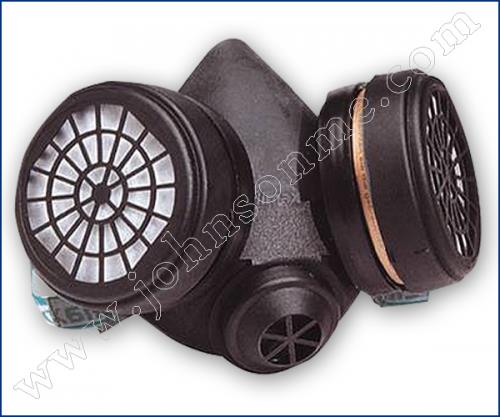It’s been two years into Covid – 19 pandemic, and face masks have become an integral part of our lives. But even before that, respiratory masks were not a new concept for millions of people working across diverse industries. In fact, occupational respiratory diseases are one of the major causes of death worldwide. In addition, some industries such as mining, construction, automotive, oil and gas have higher incidence rates of respiratory issues.
Employees working in hazardous environments or industries exposed to dangerous materials should protect themselves. Masks and respirators, a core element of Personal Protective Equipment (PPE), are used to protect your health while working with exposure to airborne hazards. But, how will you choose the right respirator? This step-by-step guide will walk you through the process. Read on.
Step 1: Identify the hazards
The first step towards choosing a respirator starts by identifying the hazards you face. There are different types of respirators, and each one is designed to protect from specific hazards. Next, you need to assess the type of hazards that exist at your industry worksite, including glasses, vapors, fumes, smoke, sprays, fog, or a combination.
Evaluating the equipment and machinery operating manuals, reviewing the safety data sheets and collecting information about the industry procedures would help you gather details about the hazard type and its risk level.
Step 2: Determine the Level of Contaminants
The aftermath of being exposed to hazardous pollutants varies. For instance, some toxic substances, like carbon monoxide, act quickly, making you sick or killing you in a few minutes. But, at the same time, chemicals like asbestos take years to make you sick with life-threatening conditions such as Asbestosis, Pleural disease and lung cancer. That is why it is essential to figure out how often and how prolonged the exposure could occur.
You need to evaluate the hazard type by determining the contaminants’ concentration and reviewing the exposure limit. Generally, it is measured in parts per million (ppm) or milligrams per cubic meter (mg/m3), commonly averaged over an eight-hour work shift.
If the exposure levels are above the OEL, it is mandatory to initiate respiratory protection measures in the workplace.
Step 3: Figure out the level of protection required
Which respirator is suitable for your working environment? It depends upon the level of protection required. According to OSHA regulations, all respirators must be approved by National Institute for Occupational Safety and Health (NIOSH) and should have an Assigned Protection Factor (APF). The APF value tells the level of protection a respirator or class of respirators is expected to provide its users.
How do you calculate the APF level or hazard ratio? Divide the exposure level by the exposure limit. The value could range from 10 to 10,000.
Step 4: Choose the respirator type
Respirators are basically categorized into Air-Purifying Respirators (APR) and Atmosphere-Supplying respirators (ASR). As the name suggests, APRs purify the hazardous air before you breathe it in, whereas ASRs provide clean, breathable air from safe and independent sources.
The most common types of Air-Purifying Respirators include face mask respirator, half-face respirators, full-face respirators and powered air-purifying respirators. Face masks are only effective in filtering out the particles and offer minimal protection to the user. Both half-face and full-face respirators use any combination of prefilters, filters and cartridges. Keep in mind that choosing the right filter and cartridge is just as crucial as getting the right respirator itself.
Besides choosing a piece of respiratory equipment according to hazard level, you must also think about the compatibility with other required protective equipment, if any, comfort and ability to do the job.
Final Thoughts
Prolonged exposure to contaminants could lead to debilitating conditions like asthma, lung disease, chronic disorders, and cancers. That is why you should never overlook the importance of respiratory protection in hazardous worksites.
Make sure to assess the risk of toxic pollutants and their exposure level in your work environment to implement appropriate respiratory protection. Different types of respirators protect you against different threats. Ensure you choose the right respirator type that will provide you with the optimum level of protection from harmful particles, gasses or vapors.
Need Assistance in Making a Decision? Contact Johnson Trading
If you are still uncertain about finding the respirators for your workplace conditions, contact Johnson Trading for expert assistance. Being the leading manufacturer and distributor of various industrial safety and personal protective equipment, we can provide you with the highest standards and quality products.
Get in touch with Call on +971 6 539 9229 or Email [email protected] with Johnson Trading for more information and assistance.
